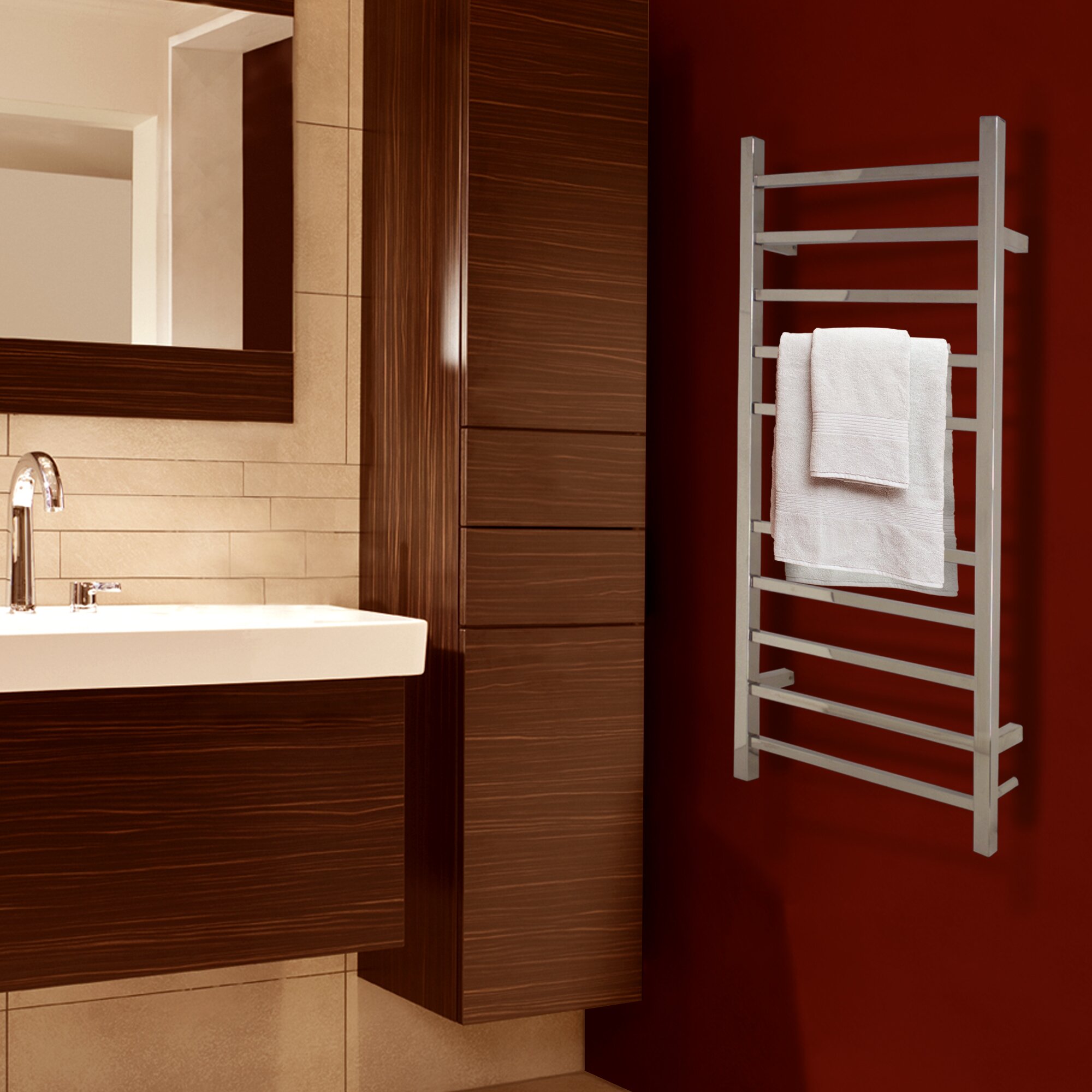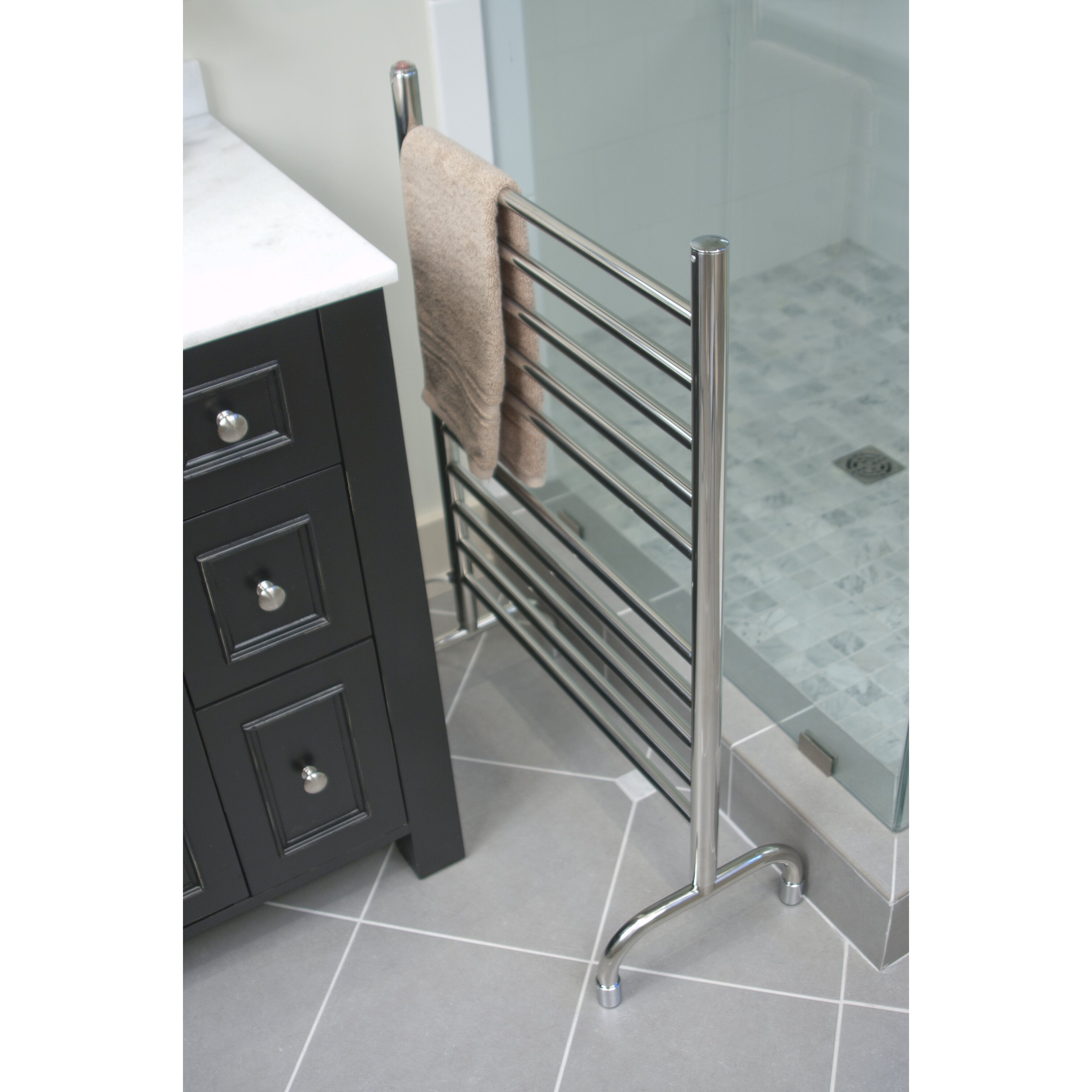The Benefits of Electric Towel Rails: Electric Only Towel Rails For Bathrooms

Electric towel rails are a luxurious and practical addition to any bathroom. Unlike traditional towel warmers, which rely on hot water circulation, electric towel rails offer numerous advantages that enhance comfort, convenience, and energy efficiency.
Luxurious Bathroom Experience
Electric towel rails elevate the bathroom experience by providing warm, dry towels at your fingertips. Imagine stepping out of a relaxing shower or bath and wrapping yourself in a soft, warm towel. This simple luxury adds a touch of indulgence to your daily routine, creating a spa-like atmosphere in your own home.
Energy Efficiency, Electric only towel rails for bathrooms
Electric towel rails are designed to be energy-efficient, consuming less power than traditional towel warmers. They typically use a heating element that quickly warms the rails, allowing you to enjoy warm towels without excessive energy consumption.
Features and Benefits
Electric towel rails offer a range of features and benefits, making them a desirable choice for modern bathrooms:
- Fast Heating: Electric towel rails heat up quickly, providing warm towels within minutes.
- Adjustable Temperature: Many models allow you to adjust the temperature to your preference, ensuring optimal comfort.
- Safety Features: Electric towel rails are designed with safety features, such as overheat protection and waterproof construction, ensuring safe operation.
- Stylish Designs: Electric towel rails are available in various styles and finishes to complement any bathroom decor.
- Easy Installation: Most electric towel rails are easy to install, with simple plug-and-play options or hardwired connections.
- Low Maintenance: Electric towel rails require minimal maintenance, simply wipe them clean with a damp cloth.
Types of Electric Towel Rails

Electric towel rails come in various styles and designs to complement any bathroom decor. They are available in different sizes, shapes, and finishes to suit individual preferences.
Types of Electric Towel Rails
The most common types of electric towel rails are ladder, curved, and straight styles.
- Ladder towel rails are popular for their space-saving design. They resemble a ladder with horizontal bars that provide ample space for towels.
- Curved towel rails are designed to create a more elegant and modern look. They are often used in smaller bathrooms where space is limited.
- Straight towel rails offer a minimalist and contemporary style. They are perfect for bathrooms with a clean and simple design.
Heating Elements
Electric towel rails utilize different heating elements to warm towels efficiently. The most common types include dry heat, wet heat, and infrared.
- Dry heat towel rails use a heating element that is sealed within the rail, preventing any moisture from coming into contact with it. This type of heating element is typically faster and more efficient than wet heat.
- Wet heat towel rails use a heating element that is exposed to water, allowing for a more gentle and even heating process. This type of heating element is often preferred for its energy efficiency and ability to maintain a consistent temperature.
- Infrared towel rails use infrared technology to heat towels directly, providing a fast and efficient heating process. Infrared technology is known for its ability to penetrate deep into fabrics, ensuring towels are thoroughly heated.
Materials
Electric towel rails are available in a variety of materials, each offering unique advantages and disadvantages. Some of the most popular materials include chrome, stainless steel, and brass.
- Chrome towel rails are a popular choice due to their sleek and polished finish. They are durable and resistant to corrosion, making them suitable for humid bathroom environments.
- Stainless steel towel rails are known for their strength and durability. They are also resistant to corrosion and rust, making them a long-lasting and reliable option.
- Brass towel rails offer a classic and elegant look. They are known for their durability and resistance to corrosion, but they may require regular cleaning to maintain their shine.
Comparison Table
The following table provides a comparison of different electric towel rail models based on their features, price range, and suitability:
| Model | Features | Price Range | Suitability |
|---|---|---|---|
| Model A | Ladder style, dry heat, chrome finish | $100-$200 | Small to medium bathrooms |
| Model B | Curved style, wet heat, stainless steel finish | $200-$300 | Small bathrooms |
| Model C | Straight style, infrared heating, brass finish | $300-$400 | Large bathrooms |
Installation and Maintenance

Installing and maintaining your electric towel rail is a straightforward process that ensures its longevity and efficiency. This section provides detailed information on installation methods, safety precautions, and essential maintenance practices.
Installation
Installing an electric towel rail involves connecting it to the power supply and mounting it to the wall. Here’s a step-by-step guide:
- Safety First: Ensure the power supply is switched off before starting the installation process. This prevents accidental electrocution and ensures your safety.
- Locate the Power Source: Determine the nearest power outlet and assess its compatibility with the towel rail’s power requirements. If necessary, consult an electrician to ensure proper wiring and safety.
- Wall Mounting: Choose a suitable location on the wall, ensuring the towel rail is installed at a safe height and distance from any water sources. Mark the mounting points on the wall and drill holes according to the towel rail’s instructions.
- Secure the Mounting Bracket: Attach the mounting bracket to the wall using the provided screws or anchors. Make sure the bracket is securely fastened to the wall to support the weight of the towel rail.
- Connect the Towel Rail: Connect the towel rail to the mounting bracket and ensure it is securely attached. This step may require specific tools and techniques, so consult the installation manual for detailed instructions.
- Electrical Connection: Connect the towel rail to the power supply using the appropriate wiring and connectors. This step is crucial and requires careful attention to avoid electrical hazards. Consult an electrician if you are unsure about any aspect of the electrical connection.
- Test the Towel Rail: Once the installation is complete, switch on the power supply and test the towel rail’s functionality. Ensure the heating elements are working correctly and the towel rail is heating up to the desired temperature.
Methods of Connecting Electric Towel Rails to the Power Supply
Electric towel rails can be connected to the power supply using various methods, each with its own advantages and considerations:
- Plug-in: This is the simplest and most common method, where the towel rail is plugged directly into a standard power outlet. This option offers flexibility in placement and is suitable for most installations.
- Hardwired: This method involves directly connecting the towel rail to the electrical wiring in the wall, offering a more permanent and aesthetically pleasing installation. It typically requires an electrician to ensure safe and compliant wiring.
- Dedicated Circuit: Installing a dedicated circuit for the towel rail ensures it has a separate power source, minimizing the risk of overloading the circuit and potential safety hazards.
Maintenance
Regular maintenance is essential to keep your electric towel rail functioning optimally and prevent any potential issues.
- Cleaning: Regularly clean the towel rail using a soft cloth and a mild detergent. Avoid abrasive cleaners that can damage the surface.
- Dust Removal: Ensure the towel rail is free of dust and debris that can affect its heating efficiency and longevity.
- Check for Damage: Inspect the towel rail for any signs of damage, such as cracks, scratches, or loose connections. Repair or replace any damaged components to prevent further issues.
- Temperature Control: Regularly check the towel rail’s temperature control settings to ensure it is operating within the recommended range. Avoid excessive temperatures that can cause overheating or damage to the towel rail.
- Energy Efficiency: Optimize the towel rail’s energy efficiency by using a timer or thermostat to control its operation and avoid unnecessary energy consumption.
Troubleshooting
Troubleshooting common issues with electric towel rails can help you diagnose and resolve problems efficiently.
- No Power: Check the power supply and ensure the towel rail is plugged in or connected to the electrical wiring correctly. If the power supply is working, inspect the towel rail’s fuse or circuit breaker for any issues.
- Not Heating: Verify that the towel rail is switched on and the temperature control settings are appropriate. Check for any blockages or obstructions that may be preventing heat circulation.
- Uneven Heating: Ensure the towel rail is installed correctly and the heating elements are not obstructed. Inspect the towel rail for any signs of damage or malfunctioning components.
- Overheating: Check the temperature control settings and ensure they are within the recommended range. Inspect the towel rail for any signs of damage or malfunctioning components that may be causing overheating.